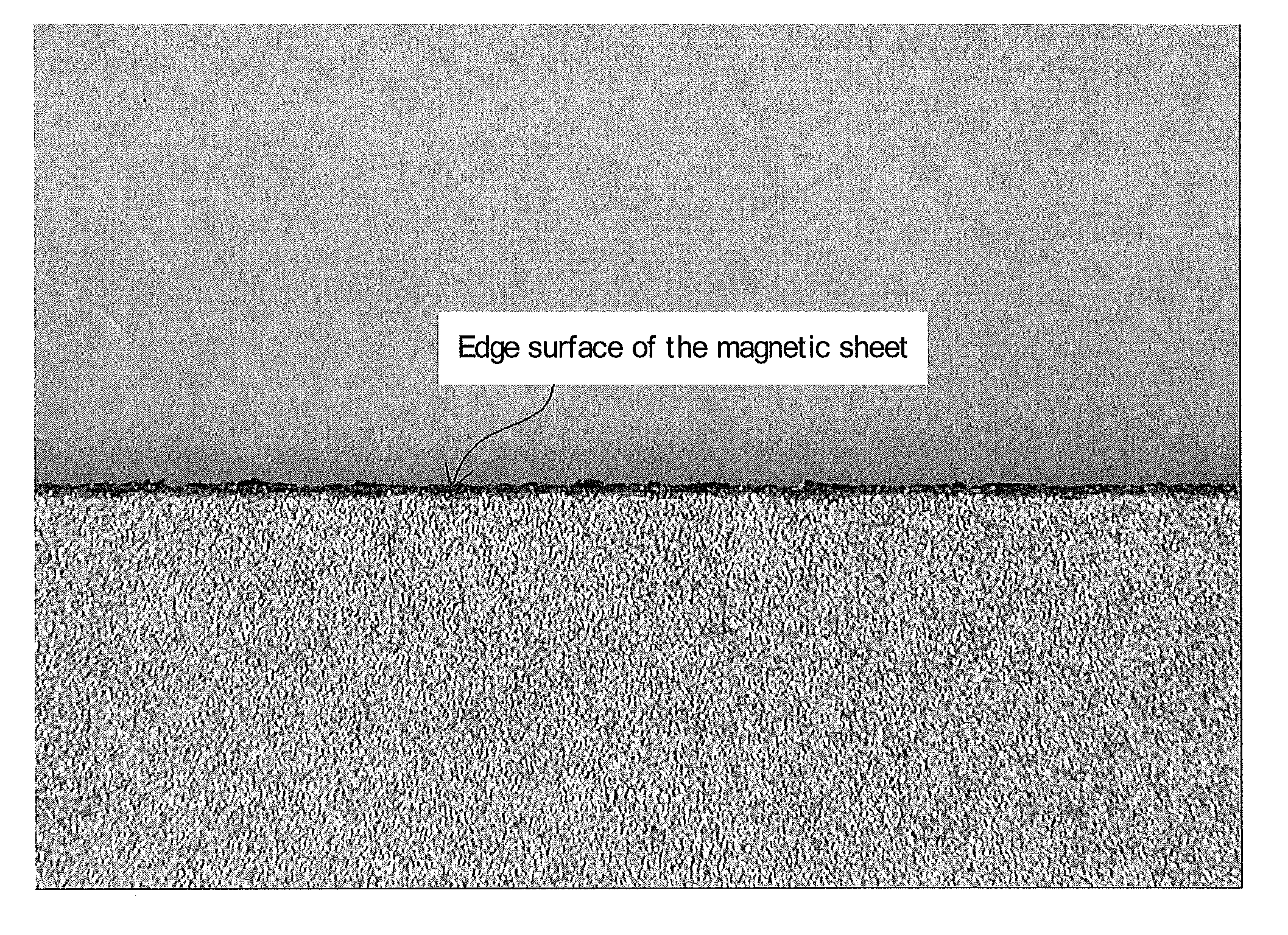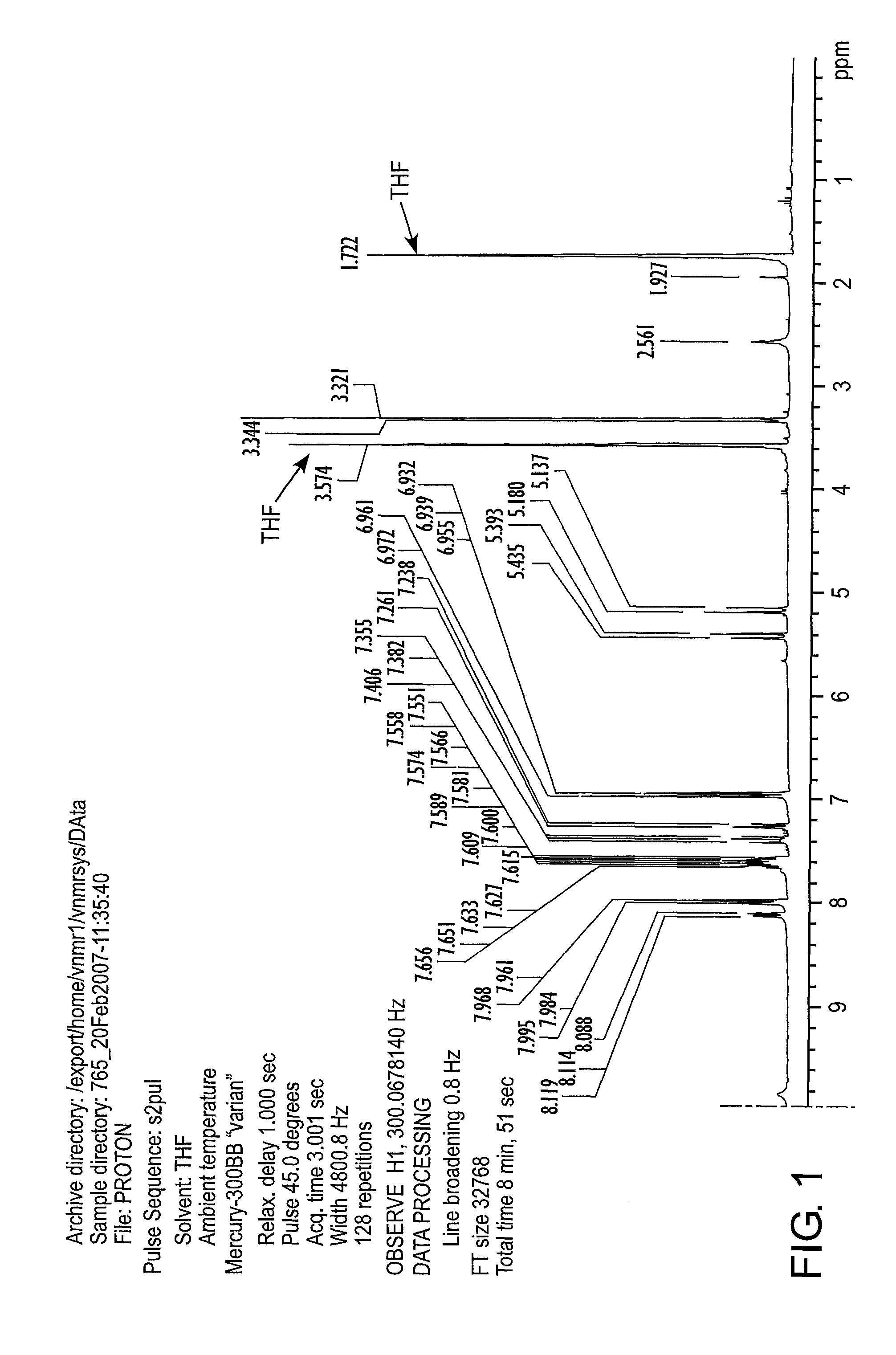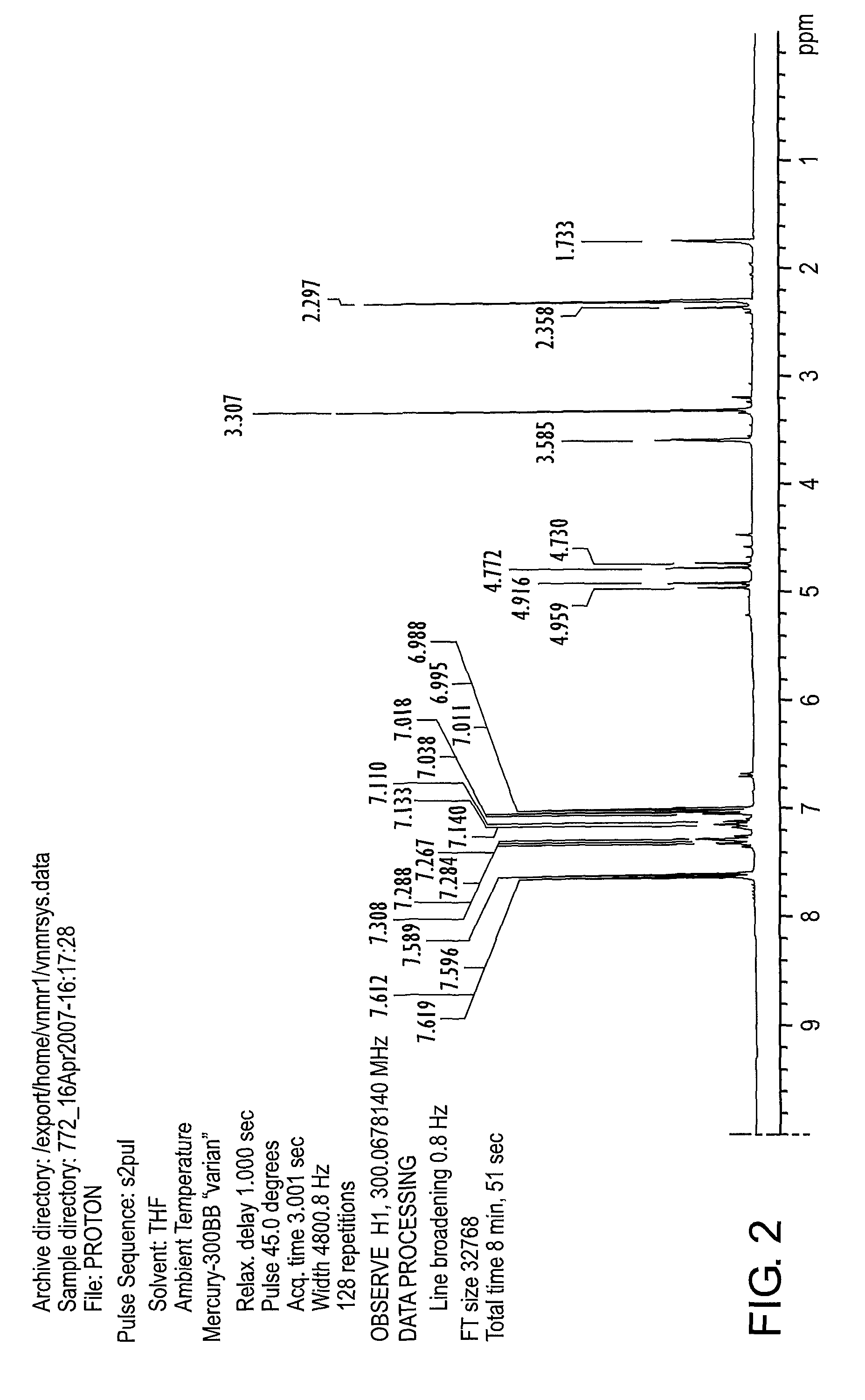Method for producing magnetic sheet
a magnetic sheet and sheet metal technology, applied in the field of magnetic sheets, can solve the problems of reducing the communication distance of rfid transmission in the electromagnetic induction system, affecting the reception of radio frequency, and affecting the quality of magnetic sheets, so as to prevent the libration of halogen ions, inhibit the release of unnecessary electromagnetic waves, and reduce the effect of unnecessary electromagnetic waves
- Summary
- Abstract
- Description
- Claims
- Application Information
AI Technical Summary
Benefits of technology
Problems solved by technology
Method used
Image
Examples
example 1
—Preparation of Curing Agent—
[0124]Sulfonium antimonate complexes respectively expressed by the formula 1d, 1e and 1f (see JP-A No. 10-245378 for synthesis methods thereof) were each made dissolved in ethyl acetate to prepare a 10% by mass ethyl acetate solution of each complex. A 10% solution of sodium borate expressed by the formula 3 (see JP-A No. 10-310587 for a synthesis method thereof) was prepared separately to above.
[0125]The 10% by mass solution of the sodium borate expressed by the formula 3 was mixed in the 10% by mass ethyl acetate solution of the complex in an equimolecular amount at room temperature, and the mixture was stirred for 30 minutes. Thereafter, the ethyl acetate layer was separated from the reacted mixed solution, and dried. The ethyl acetate was then removed under the reduced pressure. As a result, the sulfonium borate complex (4-hydroxyphenyl-methyl-1-naphthylmethyl sulfonium tetrakis(pentafluorophenyl) borate) expressed by the formula 1a, the sulfonium bo...
examples 2 to 7
—Preparation of Magnetic Sheet—
[0151]Magnetic sheets of Examples 2 to 7 were each prepared in the same manner as in Example 1, provided that at least one of the formulated amount of the cationic curing agent A, the press retaining temperature, and the press retaining duration were changed as presented in Table 2.
example 8
—Preparation of Magnetic Sheet—
[0152]A magnetic sheet of Example 8 was prepared in the same manner as in Example 1, provided that as the curing agent, a cationic curing agent C (4-hydroxyphenyl-methyl-benzyl sulfonium tetrakis(pentafluorophenyl) borate; the formula (1c)) was used instead of the cationic curing agent A (4-hydroxyphenyl-methyl-1-naphthylmethyl sulfonium tetrakis(pentafluorophenyl) borate; the formula (1a)).
PUM
| Property | Measurement | Unit |
|---|---|---|
| temperature | aaaaa | aaaaa |
| temperature | aaaaa | aaaaa |
| glass transition temperature | aaaaa | aaaaa |
Abstract
Description
Claims
Application Information
 Login to View More
Login to View More - R&D
- Intellectual Property
- Life Sciences
- Materials
- Tech Scout
- Unparalleled Data Quality
- Higher Quality Content
- 60% Fewer Hallucinations
Browse by: Latest US Patents, China's latest patents, Technical Efficacy Thesaurus, Application Domain, Technology Topic, Popular Technical Reports.
© 2025 PatSnap. All rights reserved.Legal|Privacy policy|Modern Slavery Act Transparency Statement|Sitemap|About US| Contact US: help@patsnap.com



